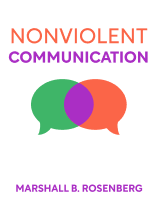

This article is an excerpt from the Shortform book guide to "Nonviolent Communication" by Marshall B. Rosenberg. Shortform has the world's best summaries and analyses of books you should be reading.
Like this article? Sign up for a free trial here .
What is emotional responsibility? How can taking responsibility for your feelings help you understand what is driving them?
When negative emotions take over, we often place the blame on people or circumstances. But in reality, people or events are never the true cause of our emotions—these are just stimuli. Understanding this is the first to step to assuming emotional responsibility.
Read more to learn about emotional responsibility and how it can benefit both yourself and others.
What Is Emotional Responsibility?
Once you identify what you’re feeling, identify why you’re feeling it. When our needs aren’t met, we often instinctively place the blame on our circumstances with expressions like “He drives me nuts” or “You disappointed me.” But in reality, it’s the way you react to your circumstances that determines how you feel, not the circumstances themselves.
It’s important to understand that this doesn’t mean your feelings aren’t justified or that you can simply choose to feel happy instead of miserable. When you assume emotional responsibility, you acknowledge that your feelings stem from your own needs and expectations and not from the actions of others.
Just as in identifying and expressing feelings, language plays an important role in emotional responsibility. There are three ways we deny responsibility for our emotions.
- Using “it” and “that” to describe your reaction (like “That makes me nervous” or “It annoys me when you do that”) implies that something external is causing your feelings.
- Using a pronoun other than “I” after the phrase “I feel this emotion because.” This looks like “I feel sad because he didn’t show up” or “I feel annoyed because she isn’t here yet.”
- Correctly labeling a feeling, but attributing it to someone or something else, like “When you forgot my birthday, I felt lonely.”
You can reword each of these statements to express a feeling (and take responsibility for it) by stating the feeling followed by the phrase “because I.” The table below shows three examples.
| Original Statement | Taking Responsibility for the Feeling |
| “It annoys me when you do that.” | “I feel annoyed because I don’t want to be distracted from my work right now.” |
| “I feel sad because he didn’t show up.” | “I feel sad because I was really looking forward to seeing him.” |
| “When you forgot my birthday, I felt lonely.” | “I felt lonely because I want to know that you care about me.” |
Taking emotional responsibility benefits everyone involved. Blaming a negative feeling on someone else’s actions creates a sense of guilt in that person—if their behavior changes after that, you have no way of knowing whether they’re motivated by guilt or genuine affection.
Reacting to Being Mistreated
Assuming emotional responsibility isn’t easy, especially when you’ve been mistreated in some way. When that happens, you have four choices for how to react: You can blame yourself, blame the other person, notice your feelings and needs, or notice the other person’s feelings and needs. For example, imagine your partner says, “You’re so needy.” What are your choices?
- If you choose to blame yourself, you take your partner’s words personally. This means you react by accepting that judgment, feeling guilty, and vowing to be less “needy.” Over time, this choice creates a pattern of guilt and shame that can harm your self-esteem.
- If you choose to blame the other person, you get defensive. You might tell your partner, “I’m not needy, you’re just insensitive!” This is a recipe for anger and hurt.
- If you choose to notice and communicate your own feelings and needs, you take responsibility for your reaction. In that case, you might say, “When you say I’m needy, I feel hurt because I need safety to express myself in our relationship.”
- If you choose to notice and communicate the other person’s feelings and needs, you’re choosing to empathize with what they’re really trying to express. You might ask your partner, “Are you feeling overwhelmed because you need more autonomy?”
Choosing to blame yourself or the other person is unlikely to move the conversation toward a satisfying resolution for everyone. Communicating your own feelings and needs is important, but it might not help you establish the empathy required to resolve the issue.

———End of Preview———
Like what you just read? Read the rest of the world's best book summary and analysis of Marshall B. Rosenberg's "Nonviolent Communication" at Shortform .
Here's what you'll find in our full Nonviolent Communication summary :
- How nonviolent communication lets you have more compassion for yourself
- Why nonviolent communication is the key to fostering authentic connections with others
- The 4 steps to expressing yourself with empathy towards others






